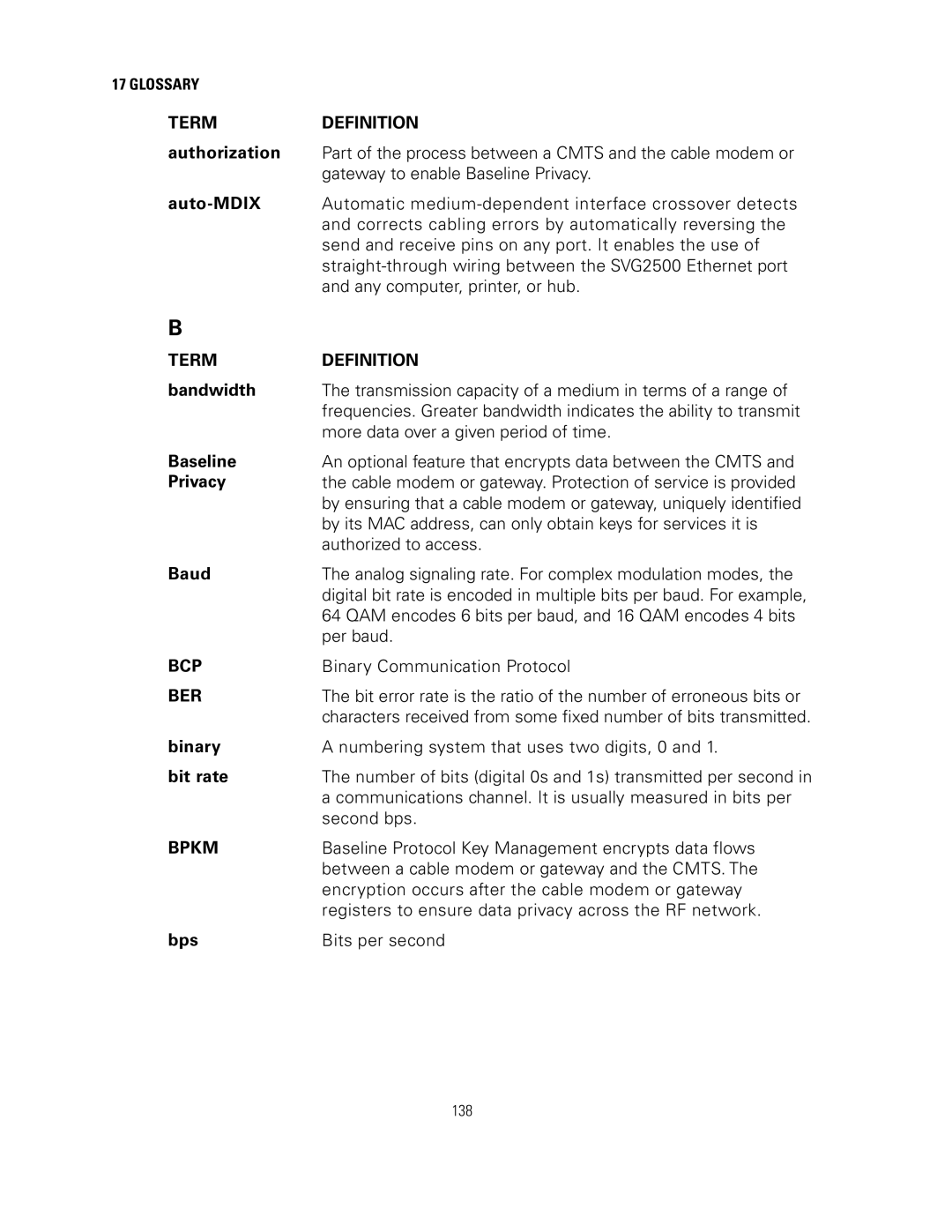17 GLOSSARY |
|
TERM | DEFINITION |
authorization | Part of the process between a CMTS and the cable modem or |
| gateway to enable Baseline Privacy. |
| Automatic |
| and corrects cabling errors by automatically reversing the |
| send and receive pins on any port. It enables the use of |
| |
| and any computer, printer, or hub. |
B
TERM | DEFINITION |
bandwidth | The transmission capacity of a medium in terms of a range of |
| frequencies. Greater bandwidth indicates the ability to transmit |
| more data over a given period of time. |
Baseline | An optional feature that encrypts data between the CMTS and |
Privacy | the cable modem or gateway. Protection of service is provided |
| by ensuring that a cable modem or gateway, uniquely identified |
| by its MAC address, can only obtain keys for services it is |
| authorized to access. |
Baud | The analog signaling rate. For complex modulation modes, the |
| digital bit rate is encoded in multiple bits per baud. For example, |
| 64 QAM encodes 6 bits per baud, and 16 QAM encodes 4 bits |
| per baud. |
BCP | Binary Communication Protocol |
BER | The bit error rate is the ratio of the number of erroneous bits or |
| characters received from some fixed number of bits transmitted. |
binary | A numbering system that uses two digits, 0 and 1. |
bit rate | The number of bits (digital 0s and 1s) transmitted per second in |
| a communications channel. It is usually measured in bits per |
| second bps. |
BPKM | Baseline Protocol Key Management encrypts data flows |
| between a cable modem or gateway and the CMTS. The |
| encryption occurs after the cable modem or gateway |
| registers to ensure data privacy across the RF network. |
bps | Bits per second |
138
